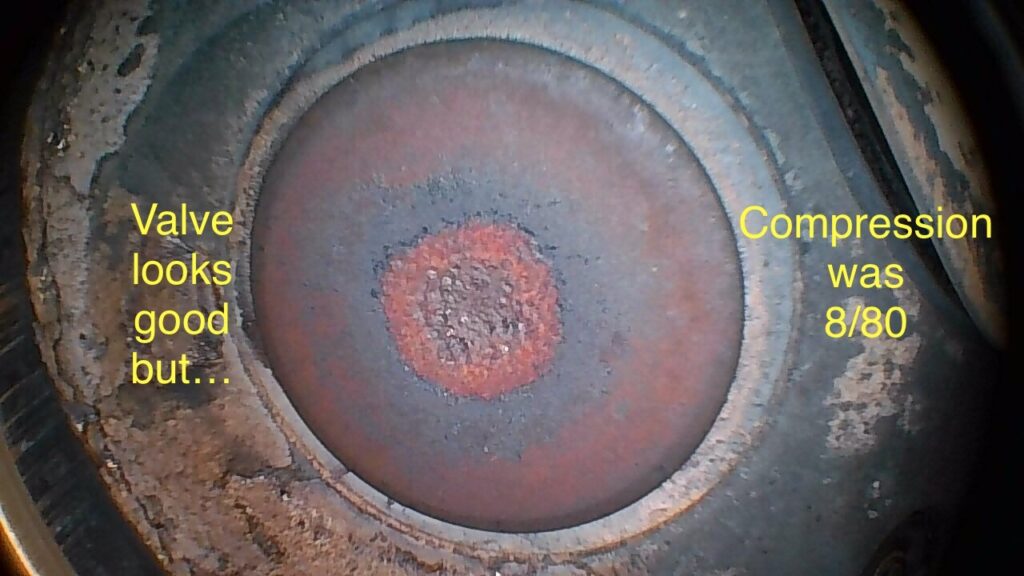Podcast: Play in new window | Download

This is a good looking exhaust valve with a nice concentric appearance. However, the compression was very low at 8/80.
I lapped the valve, hoping it would improve the compression test result… it only came up to 10/80, and that was after running the engine again and getting it nice and hot.
Although the valve face showed a healthy appearance, the seating area was telling a different story. Check out the following borescope photo of the seating area showing a possible leaking area:

It appeared there was abnormal wear on the valve seat, and the valve was not able to seal well, causing an unacceptably low compression result.
Listen to the audio for more details on this one.
I asked the question, “Borescope or compression tester… which one is better?”
Let me know what you think after listening. I’m curious to hear your thoughts.
Just click the button over to the right and record a brief audio message for me.
Thanks!
We ended up sending cylinder #5 out for repair, and then reinstalling it.
We did a test flight today, and everything went very well… ready to go for another year!

Here are some links to information on cylinder / engine break-in procedures:
Savvy Aviation / EAA webinar slides by Mike Busch (Cylinder Break-In.)
Let me know if you find other excellent resources on this topic.
The post “214 – An Unacceptably Low Cylinder Compression” appeared first at AirplaneOwnerMaintenance.com


Recent Comments